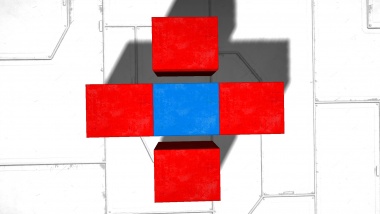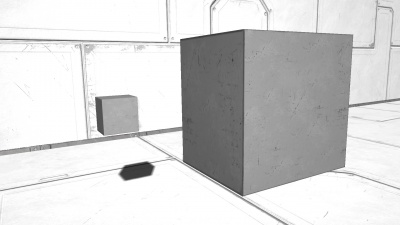Blast Door


Door block information is listed in the table down below.
| Components | Required |
| Steel Plate | 15 |
| Functional | |
| Steel Plate | 125 |
| Info | |
| Dimensions (W,H,L) | 1,1,1 |
| Mass | 2,800 kg |
| Integrity | 14,000 |
| Build Time | 18 s |
| Deformation Ratio | 20% |
| Disassemble Ratio | 300% |
| Is Airtight | Yes |
| PCU Cost | 1 |
| Components | Required |
| Steel Plate | 2 |
| Functional | |
| Steel Plate | 3 |
| Info | |
| Dimensions (W,H,L) | 1,1,1 |
| Mass | 100 kg |
| Integrity | 500 |
| Build Time | 5 s |
| Deformation Ratio | 24% |
| Disassemble Ratio | 300% |
| Is Airtight | Yes |
| PCU Cost | 1 |
Overview
The purpose for the blast door block is to allow the passage between blocks without damaging them. Two of its sides have half a meter of space between it and its neighboring block. This in turn allows for the creation of doors mechanically controlled by rotors and/or pistons that can slide next to other blocks without any damage occurring.
Usage
Blast door blocks are similar to armor blocks, however have a narrow profile and smaller collision box so not to damage surrounding blocks. These can be used in conjunction with pistons for example to create a large functioning door.
The blast door has been made mostly obsolete by the Airtight Hangar Door.
Media
|
A detailed view of the blast door block (middle, blue), and the surrounding light armor blocks. Notice that two sides of the blast door block are thinner than the others. |
View of the blast door block for both small ships (left), and large ships / station (right) |
Tips
- All blast door blocks currently have no deformation enabled, meaning they will stay the same shape till they are completely destroyed
- Since pistons are never airtight, it is impossible for a room with a blast door leading to space to be pressurized due to the gap between the blast door and neighboring blocks.


